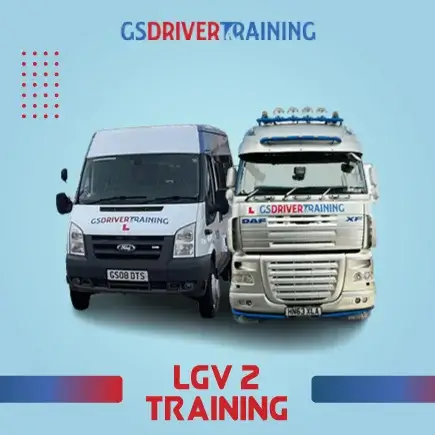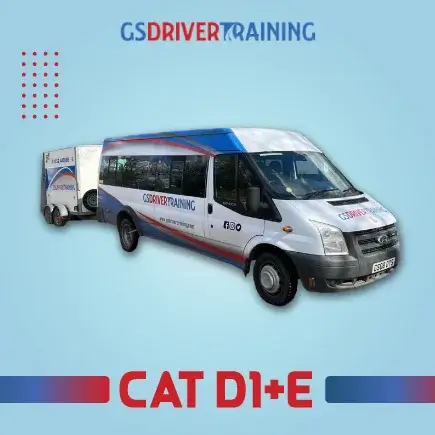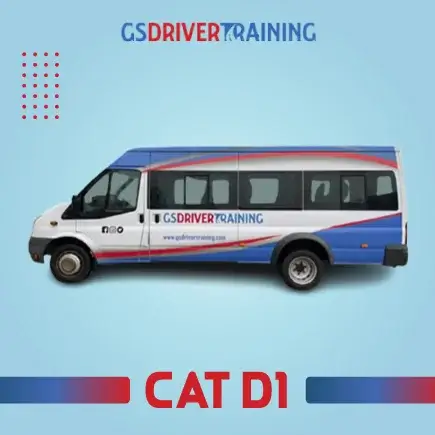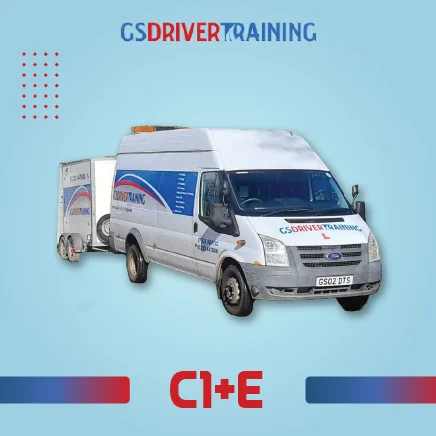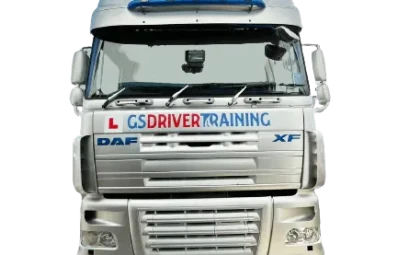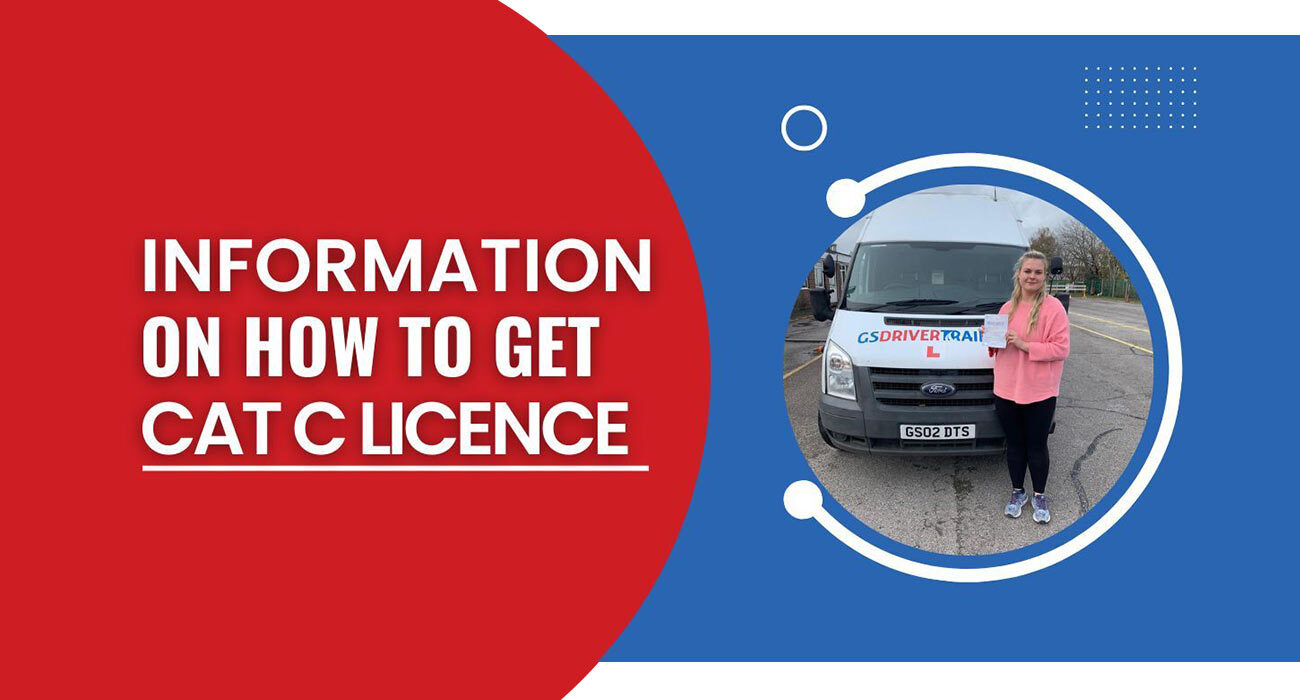
HGV driving is one of the highest-paid jobs in the UK. But due to its hectic process, people usually shift their interest. It also led to a recession period for the UK. Whether you want a CAT C licence or a C+E licence, you can get it directly. You don't have to take a test for all the HGV licences.
Here in this blog, we will discuss the details of the CAT C licence.
Getting your HGV Category C licence is the first step to starting a career as a professional HGV driver. It is the prerequisite for driving commercially and the easiest way to land a job. People also call it a Class 2 licence.
CAT C Licence
The most prevalent kind of HGV vehicle is this one. Compared to heavy vehicle drivers, drivers with this licence category typically do more local deliveries. Drivers with class 2 HGV licences can operate vehicles weighing more than 3.5 tons but not more than 32 tonnes. A Heavy goods vehicle with a cab and trailer permanently attached is covered by Category C (or Class 2 as they are also known) licences. In other terms, a rigid vehicle or what we would refer to as a "standard lorry."
C+E Licence
The broadest HGV licence you can possess is a category C+E licence. Drivers with this licence are qualified to operate drawbar or articulated vehicles (artic). The E in the category C and E licence refers to entitlement and designates a weight range up to or exceeding 750 kg for the bearer. This permit, a Class 1 licence, enables the driver to operate any required big goods truck, including a double trailer.
Cat C licence Validity
Holders of a lorry, bus, or minibus licence: If you have completed driving tests for categories C1, C, D1, D, C1E, CE, D1E, or DE, this applies to you. You must renew your licence every five years after you have got it.
Difference Between a C1 Licence and a C Licence
Licence types "C1" and "C". A category "C1" LGV driving licence is required if the vehicle's MAM is between 3.5 and 7.5 tonnes; however, if it is more than 7.5 tonnes, a category "C" LGV driving licence is required.
With a Cat C licence, Can I Operate a Bus?
However, there are a few more requirements if you want to operate any bus (with or without a trailer), including A CAT D licence, and you need a CAT D+E licence if you're going to hitch a trailer to that bus.
Get a C1 Licence Without a Medical
Yes, drivers who passed their car test before the end of 1996 often have the C1+E category as acquired rights and must have a medical examination every three years, with the first occurring at 70. Drivers who passed their C1 practical test after January 1, 1997, immediately acquired a provisional licence in the C1+E category.
Steps To Get a Licence After HGV Class 2 Training
- The first stage, assuming you already possess a Category B driving licence, is to go to and pass an LGV medical examination (unless you have already completed a medical for a PCV licence). Be accessible to schedule this medical with your neighbourhood doctor, who will also check the cost. You must bring a D4 Medical Form (which you may get from us) to your medical office, and the doctor will fill it out correctly.
- Next, submit an application to the DVLA for your Category C provisional licence after passing your LGV Medical Examination. To submit this application, fill out a D2 Application Form available at your neighbourhood post office or online from the DVLA. But we can also give it to you in this form.
- It is worthwhile to apply for Category D1 (PCV – Minibus) and Category D (PCV – Bus/Coach) with Category C provisional licence because there is currently NO FEE. If you decide to proceed with one of these tests in the future, you will also avoid reapplying for the provisional entitlement and paying any potential future fees
- Pass your LGV theory test and Hazard Perception before you can enrol in our HGV class 2 training course. You can schedule these tests online at the DVSA website or by phoning their booking line.
- Register for and pass the LGV Multiple Choice (Module 1A) and LGV Hazard Perception (Module 1B) theoretical tests when scheduling your test. We suggest booking your LGV CPC Case Study (Module 2) with this theory test, which is optional to proceed with your practical training or LGV test. You won't need to retake the LGV theory test if you already passed it to obtain a C1 licence and are "upgrading" to Category C.
- You will use the vehicle in which you receive your training for the HGV Class 2 Category C driving exam. The reversing exercise follows the examiner asking you some questions about vehicle safety. You spent the next 50 to 1 hour driving on a public road while repeating the test routes you had previously practised throughout your HGV Class 2 training. The LGV examiner will evaluate your interpersonal skills as you drive and interact with other road users.
- After passing your LGV Category C practical test, you will get Category C and C1 on your driver's licence. You can operate any rigid vehicle weighing up to 32 tonnes.
LGV training courses allow drivers to operate heavier goods vehicles professionally and safely. Investing in a course gives individuals the necessary knowledge and skills to obtain an LGV licence and provides them with all the information required to abide by the law. Lessons are tailored to the varying needs of each learner, with the knowledge and skills learned ultimately leading to greater safety and job opportunities. Those completing a training course have the best chance at successfully passing the DVSA's (Driver and Vehicle Standards Agency) practical driving test. With professional LGV drivers in high demand, investing in an LGV training course could be the gateway to an exciting career.
You must drive goods vehicles to get the HGV licence; you've come to the right place. Here at WeDrive Training, we are dedicated to providing you with the best HGV training courses on the market. Our courses are designed to give you the skills and knowledge to gain your HGV licence quickly and safely. Our experienced instructors are here to help regardless of your individual needs. With our expertise, you do not need to worry. All you have to do is come to us with your enthusiasm, and we'll take care of the rest. With examination-centred courses, industry-leading training and competitive prices, there's always been a challenging way to get your HGV licence. So don't delay - visit our website or give us a call today for further information on our HGV training courses.
Q: What is the difference between HGV and LGV training?
A: HGV training is for Heavy Goods Vehicle drivers operating larger articulated vehicles with more than 3.5 tonnes of Gross Vehicle Weight (GVW). LGV training exists for Light Goods Vehicle drivers—those operating vehicles of 3.5 tonnes GVW or lower.
Q: What qualifications are required for HGV driver training?
A: You must hold a valid driving licence and C1 entitlement, which allows you to operate vehicles up to 7.5 tonnes GVW. Previous driving experience, an in-date medical report, a valid digital tacho card, criminal record check, passport and two proofs of identity are also required.
Q: What is the typical duration of HGV or LGV driver Training courses?
A: Training courses vary in length depending on the driver's experience and the licence type. However, most courses are typically around 3-5 days in length.
Q: Are there any additional costs associated with taking an HGV or LGV licence?
A: Additional costs could include the application for a digital tacho card, medical appointment fees and the driving test fees. Therefore, it is recommended to research this further before commencing any training.
Q: How do I find the best HGV or LGV driver training courses?
A: Before you commit to engaging with any training organisation, it is essential that you conduct thorough research. First and foremost, look into the background of the organisation offering the training; take the time to check out their credentials and any available online reviews. It can also be beneficial to speak to colleagues who have completed training courses with that same provider and ask for their feedback. Doing so helps ensure you are making an informed decision before spending your time and money on the training.
Q: Will I need any additional experience to complete my training?
A: You should check the entry requirements for the course you wish to take. Some organisations may require you to have already acquired a certain level of experience on the road to be accepted onto their training courses.
Q: How much does it cost to get a lorry licence?
A: Costs vary depending on experience and organisation; however, on average, you can expect to pay around £1000-£1500 for both the training and the tests, as well as the additional costs of the application for a digital tacho card, medical appointment fees and the driving test fees.
Q: How long does it take to get a lorry licence?
A: It typically takes 2-4 weeks, depending on the training course and your individual needs.
Q: What areas do companies offer HGV or LGV training and driver courses in Surrey?
A: You can find training companies offering HGV and LGV driver courses in various towns in Surrey, including Woking, Guildford, Reigate, Dorking, and Sutton.
Q: Are there any specific qualifications required to be an LGV driver?
A: To become an LGV driver, you must have the proper certification and valid licence, as well as the relevant qualifications for the type of vehicle being operated. You will also need to pass the Driver Certificate of Professional Competence examination.
Also Read: What is Fast Track HGV Training & Its Cost?


